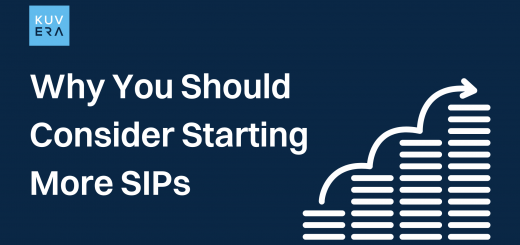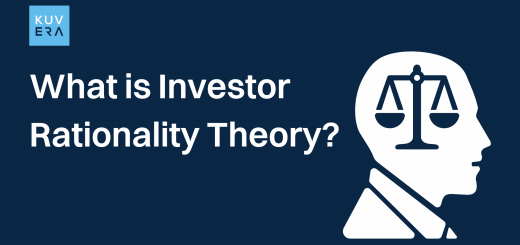Recently the Indian small cap and mid cap stocks are performing better than ever. This rally in small cap and mid cap stocks has garnered even more interest from investors looking to diversify their portfolio.
If you are also looking to invest in small cap and mid cap stocks, then the best way to go about it would be an index fund. Index funds offer a simple way to grow your wealth passively and spread your investments across various assets.
Today we will understand the difference between small cap and mid cap index funds, their performance, and strategies of these funds and help you understand who should invest in them.
What are Small Cap Index Funds?
Small cap index funds are a type of equity mutual fund that track the performance of small cap stocks, which are companies with relatively small market capitalization. These funds typically invest in companies ranked beyond the top 250 in terms of market capitalization. Small cap index funds aim to replicate the performance of a specific small cap index, such as the Nifty Smallcap 100 or the BSE Smallcap index. They are suitable for investors seeking diversification and growth opportunities in their portfolio.
Examples of Indian Small Cap Indices
Indian small cap indices include the Nifty Smallcap 100, S&P BSE Smallcap, and the Nifty Free Float Smallcap 100, among others. These indices represent a diverse range of small cap stocks listed on Indian stock exchanges and serve as benchmarks for small cap index funds. Here are some popular small cap index funds in India, https://kuvera.in/mutual-funds/all/?q=small%20cap%20
Want to know more about index funds? Checkout our commonly asked question about index funds. https://kuvera.in/blog/types-of-indices-in-india-2024/
What are Mid Cap Index Funds?
Mid cap index funds track the performance of mid cap stocks, which are companies with moderate market capitalization. These funds typically invest in companies ranked between the top 100 and 250 in terms of market capitalization. Mid cap index funds aim to replicate the performance of a specific mid cap index, such as the Nifty Midcap 100 or the S&P BSE Midcap index.
Advantage of a mid cap fund
- Diversification: Mid cap index funds provide exposure to a broad range of mid-sized companies, spreading investment risk across multiple stocks within this segment of the market. This diversification helps reduce the impact of any single company’s performance on the overall fund.
- Growth Potential: Mid cap companies often have higher growth potential compared to large cap companies due to their stage of development. Investing in mid cap index funds allows investors to participate in the growth trajectory of these companies, potentially leading to higher returns over the long term.
- Risk Management: While mid cap stocks can be more volatile than large cap stocks, investing in a diversified mid cap index fund helps mitigate individual stock risk. By spreading investments across multiple mid cap companies, investors can manage the inherent volatility associated with this segment of the market.
- Access to Promising Sectors: Mid cap index funds provide exposure to a wide range of sectors and industries, including innovative and emerging sectors. This access allows investors to capitalize on the growth potential of promising mid cap companies operating in various sectors, such as technology, healthcare, and consumer goods.
- Lower Costs: Mid cap index funds typically have lower expense ratios compared to actively managed funds, as they passively track a predefined index. This cost efficiency translates to higher returns for investors, as a significant portion of their investment is not eroded by management fees and expenses.
Examples of Indian Mid Cap Indices
Indian mid cap indices include the Nifty Midcap 100, S&P BSE Midcap, and the Nifty Free Float Midcap 100, among others. These indices represent a diverse range of mid cap stocks listed on Indian stock exchanges and serve as benchmarks for mid cap index funds. Here are the most popular mid cap index funds available in India. https://kuvera.in/mutual-funds/all/?q=mid%20cap%20
How to Invest in Small Cap or Mid Cap Index Funds?
Investing in small cap or mid cap index funds is accessible through various platforms, including online mutual fund platforms like Kuvera. You can explore a range of small cap index funds available on these platforms and select funds based on their investment objectives, risk tolerance, and investment horizon.
To invest in Index Funds on Kuvera:
Step 1: Download the Kuvera app
Step 2: Complete you KYC
Step 3: Go to “Invest” and select “Mutual Funds”
Step 4: Tap on “Start a SIP” and select Index Funds, or Go to Low cost Index Funds
Step 5: Choose the small cap or mid cap index fund you want to invest in, select Monthly SIP or Lumpsum
Step 6: Enter amount / SIP date (if applicable) and complete your transaction.
Performance of Small and Mid Cap in India
In the fiscal year 2024, both mid- and small-cap stocks have witnessed remarkable surges, marking a significant milestone in market capitalization. The Nifty Smallcap 100 index surged by an impressive 76.15%, soaring from 8,701 points to 15,327 points. Notably, over the past 11 months, this index closed positively in 9 months, with November registering the highest monthly gain at 12%. Remarkably, the index maintained an average return of 5% across these nine months.
Similarly, the Nifty Midcap 100 index also experienced a substantial uptrend, rising by 61.21% in FY24, climbing from 29,775 points to 48,027 points. mirroring the small-cap index, the mid-cap index witnessed its most significant monthly gain in November, recording an increase of 10.37%. Within the Nifty Smallcap 100 category, a significant number of individual stocks have outperformed the index, with 56 stocks recording returns exceeding 76% in FY24. Likewise, in the Nifty Midcap 100 segment, 52 stocks have surpassed the index with returns exceeding 62%, with 28 of them achieving multibagger status.
Who should invest in small cap and mid cap index funds?
Investing in small cap index funds is suitable for investors who have a higher risk appetite and a longer investment horizon. These funds are ideal for those seeking potentially higher returns and are willing to tolerate greater volatility in exchange for growth opportunities. Additionally, investors who believe in the growth potential of smaller companies and are comfortable with the inherent risks associated with them may find small cap index funds appealing.
On the other hand, mid cap index funds are suitable for investors who seek a balance between risk and return. These funds offer exposure to companies with moderate market capitalization, which may offer relatively higher growth potential than large caps but with lower volatility compared to small caps. Investors with a moderate risk tolerance who are looking to diversify their portfolio beyond large-cap stocks may consider investing in mid cap index funds. Additionally, mid cap index funds can be suitable for investors with a medium to long-term investment horizon who are seeking capital appreciation over time.
Conclusion
Choosing between small cap and mid cap index funds requires careful consideration of various factors, including risk tolerance, investment objectives, and market conditions. While small cap index funds offer higher growth potential, they also come with increased volatility. On the other hand, mid cap index funds provide a balance between risk and return. By understanding the characteristics and performance of small and mid cap stocks, investors can make well-informed decisions and build a diversified investment portfolio that aligns with their financial goals.
Interested in how we think about the markets?
Read more: Zen And The Art Of Investing
Watch here: Index funds explained
Start investing through a platform that brings goal planning and investing to your fingertips. Visit kuvera.in to discover Direct Plans and Fixed Deposits and start investing today.











